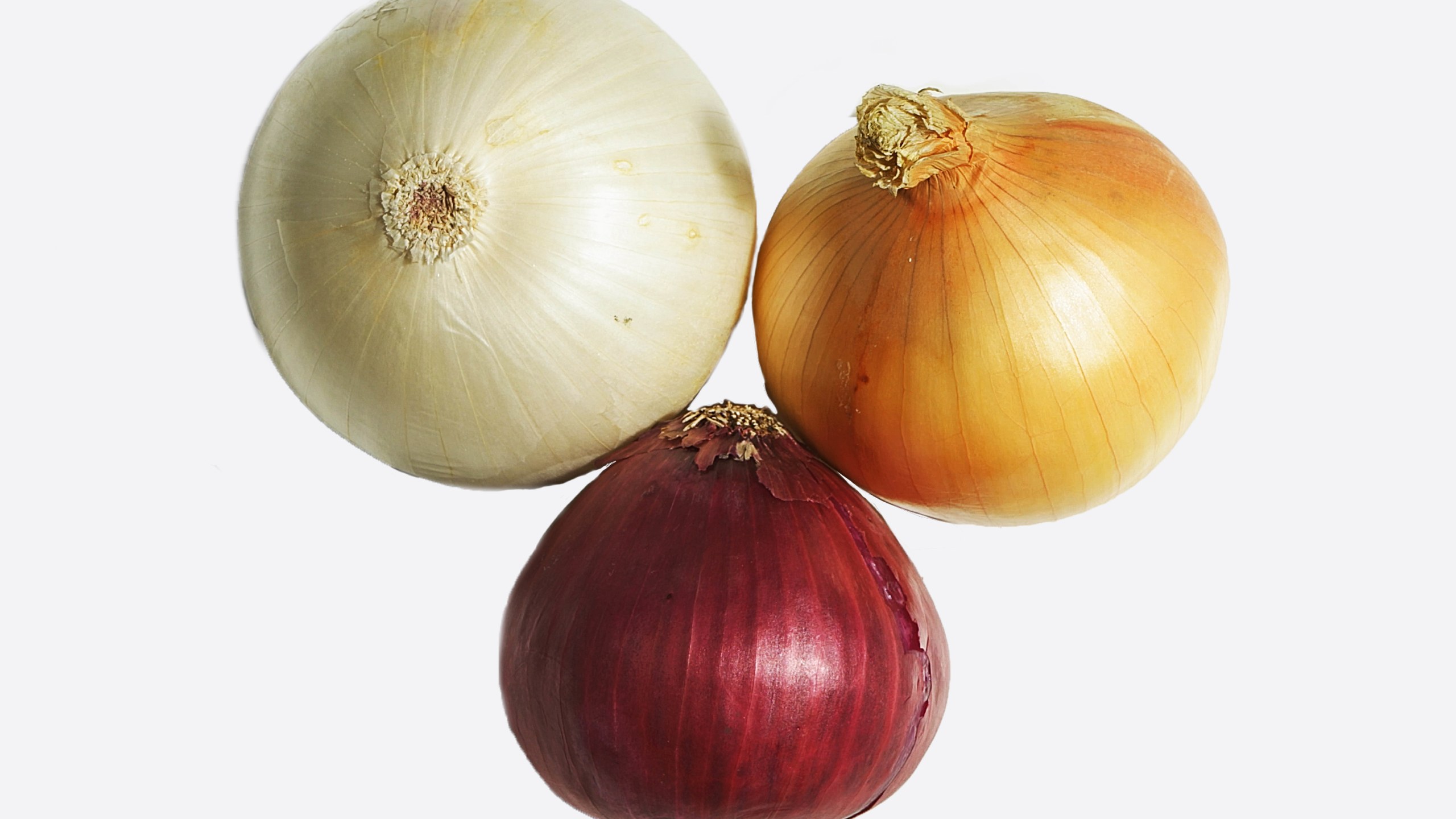
15 Jan All the Types of Onions, and What They’re Best For
Article sourced from Bon Appetite
What is the freakin’ deal with all these different types of onions? Why isn’t there just one onion? Wouldn’t that be simpler? Well, yes, it would be simpler. But it would also be a hell of a lot more boring.
We love the fact that there are different types of onions out there because each has its own special qualities—a distinct onion personality if you will. Whether it’s a white onion, yellow onion, or red onion, there’s something each one can do better than the other two. It’s all about diversity. So what do we like about the different types of onions? And in what situation do we prefer one over the others? These are the great questions of our time…or at least of your most recent Google search. Here’s what you need to know about the three most common types of onions.
White Onion
These are usually the mildest of the onion varieties, so we like to use white onions in salads and on sandwiches. Basically, if you’re going to eat an onion raw, the white onion is what you want to reach for. And while they’re pretty mild on their own, you can further tame their flame by slicing one thinly and giving it an hour-long soak in cold water—they’ll be so sweet, you can practically eat them like a salad. (Okay, maybe that’s a little dramatic, but the flavor will mellow dramatically, and you can probably eat a lot more of them.)
You’ll also see Vidalia and Maui onions mentioned in the same category as white onions. While they are white onions, both varieties contain a much higher sugar content and even lower sulfur content (the stuff that gives onions that sharp smell and flavor). Maui and Vidalia onions should be used when a recipe calls for a “sweet onion” specifically, but a white onion will make a decent sub in a pinch.
Red Onion
Sweetness is the red onion’s greatest strength. The sharpness of its flavor and the intensity of its smell are slightly more potent than that of the white onion, but the sugar content is much higher. That natural sweetness makes them a prime candidate for pickling, which we love to do when tacos, pizza, or fried rice are involved. The other obvious draw to a red onion is its color. That deep red hue provides a nice variety in color that other onions don’t.
And when it comes to grilling, red onions are our first choice. Cut into wedges, they char nicely on the grill, and their interior texture goes jammy, instead of mushy, like white and yellow onions tend to do.
Yellow Onion
You don’t want to eat a raw yellow onion. We cook these onions 100 percent of the time out of respect for the health and wellbeing of our noses and taste buds. (And those of our friends and lovers.) While the flavor of a yellow onion (also commonly called a Spanish onion) is fantastic in its own assertive way, it comes with a very high sulfur content. Cooking out that intense sharpness paves the way for the sweet onion flavor to shine, which is why we prefer yellow onions whenever we caramelize. The amount of flavor you’ll get from caramelizing yellow onions, as opposed to white, is significantly higher. Your burger will thank you.
So we like white onions raw, red onions grilled or pickled, and yellow onions caramelized or roasted. But what should we use when we’re just sautéing onions in butter or olive oil for some base flavor in sauces or pastas or fried rice? Well, you can use whatever you want. If it’s just some generalized onion flavor backup you’re after, it doesn’t really matter. All three onions will do the job just fine. It’s really up to you to decide if you want a little color or sweetness or sharpness. The power is in your hands. Use it wisely.


